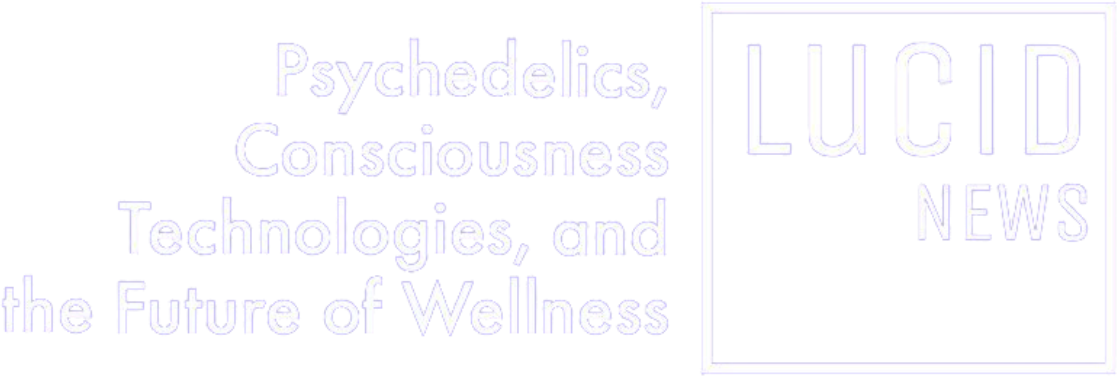Scientists Create Cell-Based Psychedelic Toad Venom, a Potential 5-MeO-DMT “Bio-Factory”

Toad venom use hit a fever pitch last year becoming the drug du jour of psychedelic enthusiasts and wellness tourists alike. Whether seeking boundless communion with the universe or a swan dive off the cosmic cliff, the result for the beleaguered Sonoran Desert toad has been the same: demand for venom is driving the Incilius alvarius species toward extinction.
Runaway popularity of toad venom, also known colloquially as Bufo, hit a boiling point for conservationists recently when the lifestyle publication Town & Country — dedicated to “influence, taste, and elegant living” — ran a story about how the toad has become “the loudest whisper at a dinner party near you.” That whisper is now a shout as popularity of the substance, which contains the potent entheogen 5-MeO-DMT, continues to gain momentum. Therapeutic wellness retreats from Toronto to Tulum are hanging out shingles to make the most of the public’s craving for enlightenment through the drug, an eagerness that does not bode well for the future security of the ancient amphibian.
A Dirty Little Secret
In the U.S. — where both synthetic and toad-derived 5-MeO-DMT are Schedule I controlled substances — celebrity influencers including Hunter Biden, Christina Haack and Jake Paul were some of the loudest voices propelling the toad craze forward in 2021. Each famously touted the healing qualities of the drug, promoting it as a tonic for emotional, physical and spiritual ills. Biden shared in his bestselling memoir “Beautiful Things” that his experience unlocked feelings of pain buried deep for too long, saying toad venom “served as a salve.” YouTube influencer-boxer Paul said it helped ease the symptoms of traumatic brain injury.
You can’t blame people for wanting the expansive and often life-changing jolt that 5-MeO-DMT can deliver. But this kind of transcendence comes at a cost.
The practice of collecting defensive secretions from toad parotoid glands isn’t a pretty sight. It often involves harassment of the animal that leads to mutilating them and destruction of their habitats. Far from the inspiring feeling of oceanic bliss on 5-MeO-DMT, the act of capturing and milking toads (in some cases packed into plastic bags by the hundreds or thousands) is invasive and predatory. Robert A. Villa, a research associate at the University of Arizona Desert Laboratory, located at the northern edge of the Sonoran Desert near Tucson, remarked to me last year that “there’s a side to use of this substance that people don’t realize they’re supporting.”
The demand for toad venom over synthetic versions of 5-MeO-DMT is driven in some cases by a spiritual belief that natural venom possesses a purer essence compared to lab-made and therefore provides a richer experience. While there is no empirical data to prove that is true, the jury is still out over whether an entourage effect encompassing all the compounds in toad venom make it a superior option. Still, collection of toad venom is an unseemly practice and a dirty little secret of the 5-MeO-DMT community. It is the factory farming of psychedelics.
Reproducing Toad Glands to Farm 5-MeO DMT
Medical doctor and researcher Leonard Lerer, along with scientists at the biotechnology company he founded, Back of the Yards Algae Sciences (BYAS), are on their way to making what they claim is the first important scientific contribution toward helping to conserve toad populations. The company says they have successfully reproduced toad parotoid glands and the world’s first known cell-based 5-MeO-DMT, essentially recreating the basic parts of the cell’s structure to carry out the physiological processes of the organism.
“This is breakthrough work,” says Lerer, “as not only is it now possible for researchers to get naturally derived 5-MeO-DMT without milking toads, but it also makes a contribution to the conservation of Incilius alvarius.”
According to Lerer, his company is forging a new trail in creating sustainable, cruelty-free 5-MeO-DMT with a near-term plan of providing researchers — completely free of cost — the cell-based toad material to study. His company plans to operate in the spirit of open science, similar to a statement recently signed by hundreds of scientists working with psilocybin, MDMA, and similar substances, to share in the common good rather than for private gain. “We will give the extract free of charge to researchers on the basis of a commitment to open science. That is, that they make their results publicly available,” says Lerer.
Providing cell-based toad venom to an admittedly limited number of researchers studying 5-MeO-DMT may seem a small contribution relative to the amount of people using toad venom in non-clinical settings. But BYAS’s longterm plan could make a significant difference, says Lerer. He says his company looks to deploy a combination of “cellular agriculture, computational biology, and pre-clinical technologies for the discovery and development of safe, effective, active psychedelic molecules.”
The drug development and clinical testing work for this effort will be done through BYAS’ partner company, Parow Entheobiosciences, which was established to advance their cell-based psychedelics into clinical development for major psychiatric and neurological conditions. According to Lerer, the BYAS-PEB partnership is intended to take the “FDA route” and anticipates an initial meeting with the FDA before the end of 2022 for its first indication of OCD.
Cell-Based Psychedelics
BYAS was established in 2018 to develop and sell natural food colorant (a booming market that’s projected to be worth $3.2 billion by 2027). It is now focused on sustainable, zero-waste innovations in algae and mushroom extracts for food and agriculture. While investigating the transformative potential of algae and mycelia in food, agriculture, and health, the company expanded their portfolio of sustainable solutions and began producing a line of plant-based products. This includes what the company says is a breakthrough algal heme analog to make plant-based meats taste better (a direct competitor to the Impossible burgers’s GMO soy-based heme).
Then COVID-19 hit, says Lerer, creating a pause and an opening for his current work with cell-based psychedelics. He says their cell-perpetuating mindset was a natural fit for the company’s mission of waste reduction, sustainability, zero-cruelty and re-use of limited resources.
“The pandemic forced us to slow down our production,” says Lerer. “But it has been a huge driver of innovative ideas and some incredible internal initiatives. We had time to grow our R&D program on cellular agriculture of psychoactive tryptamine derivatives for conditions such as PTSD, depression, OCD and addiction.”
Part of that shift towards tryptamines has included obtaining a coveted Drug Enforcement Administration analytical laboratory license to produce those robust cells from toad parotoid glands, which have proven to produce good yields of 5-MeO-DMT that keep on giving. “Our measurements of yield and concentration make us confident that we can upscale,” says Lerer. “We also have proof of concept that we can produce immortalized cell lines that are essentially a bio-factory.”
Lerer and his collaborators, including his brother Professor Bernard Lerer — a neuropsychiatrist and neuropharmacologist — were so confident of their innovation and its promise that in December, 2021, they announced the milestone at an annual meeting of the American College of Neuropsychopharmacology, the world’s leading forum for cutting-edge science on brain function and psychotropic drugs.
During this conference, the BYAS researchers announced the successful production of 5-MeO-DMT from parotoid gland cells taken from an unharmed Sonoran Desert toad. They used these cells to create immortalized cell lines, a technique used extensively in the cultured or lab grown meat industry.
According to Lerer, a paper is currently in preparation for submission to a peer-reviewed journal that will contain detailed methods to ensure that these experiments can be replicated and validated by other researchers. Lerer says that the procedure of harvesting these cells is as invasive as a human topical dermatological biopsy and the donor toad remains alive and thriving.
Is Toad-Derived Equal To Synthetic?
Candida Pino, who leads psychedelic ceremonies and is a proponent of using only synthetic 5-MeO-DMT, is a Sonoran Desert toad conservationist. She describes the intrusive practice of collecting toad-derived 5-MeO-DMT. “Incilius alvarius are captured when most active from late May to September when they come out of hibernation,” says Pino. “Held firmly in hand, toads are forced to expel self-protective toxins by squeezing the parotoid glands located behind their eyes. Collecting them to forcefully eject these toxins adds to the list of already significant environmental stressors they endure, including climate change, introduction of fungal pathogens, and habitat loss.”
She notes that a belief that toad-derived 5-MeO-DMT provides a purer experience than synthetic is not the same as scientific evidence. “Anecdotal evidence suggests that the effects of 5-MeO-DMT are the same whether it is delivered via toad toxins or synthetic,” says Pino. “A preference for ‘natural’ is based on a perception that is not scientifically based but is likely more of a placebo effect.”
Lerer’s team looks to get to the bottom of that. BYAS is examining the potential entourage effect of natural toad venom and checking if those anecdotal reports of its superiority are indeed factual. In collaboration with Hadassah BrainLabs in Israel — which studies non-human models of psychiatric and neurological diseases — BYAS and PEB are exploring whether natural, full-spectrum entheogens including psilocybin outperform synthetic psychedelics in conditions such as depression, OCD, and PTSD, including on measures of neuroplasticity. Lerer believes the data from those tests will inform their cell-based toad venom work moving forward. He says the first results will be available later this year and all results will be presented at conferences and published in peer-reviewed journals.
“In three to four months we’ll have the psilocybin comparison data,” says Lerer. “This platform will then be used for toad secretion to answer the similar question: is natural really better than synthetic or is this anecdotal?”
The bigger picture, says Lerer, includes BYAS and PEB collaborating to identify other natural entheogenic molecules or combinations of molecules that can treat specific conditions, including OCD (their lead indication), depression, PTSD, autism, schizophrenia, and TBI. With this goal in mind, he says BYAS is building up its library of entheogenic biomass including hundreds of different types of mushrooms, cacti, and plants.
To protect their Incilius alvarius research, BYAS has stated its intention to make its patented cell reproduction process available to other researchers in the future. The company is concerned that they and other researchers will have similar obstacles that psilocybin companies are currently experiencing. This includes trying to secure patents on natural molecules that are part of the planet’s entheogenic heritage. Lerer says he wants to prevent that, adding, “Our aim is to make our cell-based Incilius alvarius extract available to other researchers and focus on identifying novel molecules with therapeutic applications.”
Image: Nicki Adams








